#african american artists 1950s
Text

Drinking Fountains, Mobile, Alabama, Gordon Parks, 1956
#photography#vintage photography#vintage#gordon parks#alabama#mobile#color photography#street photography#segregation#1950s#1956#american#african american#black artists#artists of color#100 notes
181 notes
·
View notes
Photo
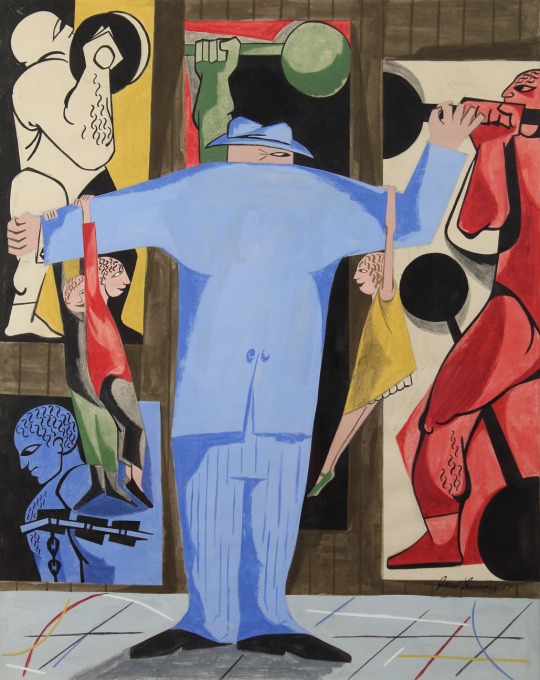
Strong Man, Jacob Lawrence, 1951
Casein tempera and gouache on paper
22 x 17 in. (55.88 x 43.18 cm)
#art#painting#jacob lawrence#modern art#black artists#20th century#artists of color#1950s#casein tempera#gouache#american#african american#100 notes
257 notes
·
View notes
Text
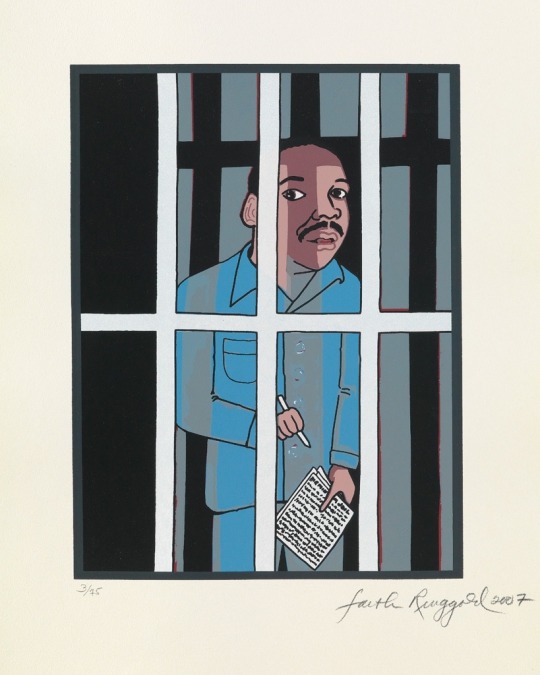
Faith Ringgold
Letter From Birmingham City Jail
1954
#faith ringgold#american artist#american painter#american art#textile artist#woman artist#woman painter#black artist#black painters#african american artist#women artists#feminist artist#modern art#art history#tumblrpic#tumblrpictures#tumblr art#civil rights#1950s#history art
17 notes
·
View notes
Text
Hazel Dorothy Scott was an internationally known jazz and classical pianist and singer; she also performed as herself in several films. She was prominent as a jazz singer throughout the 1930s and 1940s.
In 1950, she became the 1st woman of color to have her own TV show, The Hazel Scott Show, featuring a variety of entertainment. To evade the political persecution of artists in the McCarthy era, Scott moved to Paris in the late 1950s and performed in France, not returning to the United States until 1967.
Born in Port of Spain, Hazel was taken at the age of four by her mother to New York. Recognized early as a musical prodigy, Scott was given scholarships from the age of eight to study at the Juilliard School. She began performing in a jazz band in her teens and was performing on radio at age 16.
On October 2, 1981, Hazel Scott died of cancer at Mount Sinai Medical Center in New York City.
She was 61 years old, and survived by her son Adam Clayton Powell III.
She was buried at Flushing Cemetery in Queens, New York, near other musicians such as Louis Armstrong, Johnny Hodges, and Dizzy Gillespie.
LEGACY:
🎹Scott was best-known internationally as a performer of jazz.
🎤She was also accomplished in politics, leading the way for African Americans in entertainment and film; and was successful in dramatic acting and classical music.
🎹She was noted for her swinging style, performing at the Milford Plaza Hotel in her last months.
81 notes
·
View notes
Text

Spiritual jazz (or astral jazz)[1] is a sub-genre of jazz that originated in the United States during the 1960s. The genre is hard to characterize musically but draws from free, avant-garde and modal jazz and thematically focuses on transcendence and spirituality. John Coltrane's 1965 album A Love Supreme is considered landmark in the genre.

Origins
Pharoah Sanders in 1981.
Critics usually associate spiritual jazz with the 1960s but the beginnings of the genre can be traced to the 1940s and 1950s in works such as Black, Brown and Beige by Duke Ellington, Zodiac Suite by Mary Lou Williams, and Jazz at the Vespers by George Lewis.
During the 1960s in the United States, the civil rights movement was occurring, causing societal change and political movements. As a result, African-American people gained more freedom to celebrate their culture and to express themselves religiously. This led to a desire to push the conventions of jazz, with some artists choosing to search for transcendence and spirituality in their music.
John Coltrane's 1965 album A Love Supreme is generally considered the genesis of spiritual jazz though Coltrane can be heard developing the sound on the song "Spiritual" recorded four years earlier. Treblezine wrote "Spiritual jazz begins, essentially, with John Coltrane," while Pitchfork wrote "This musical exploration [of spirituality] was epitomized by tenor saxophonist John Coltrane". A Love Supreme and other works by John Coltrane inspired other jazz musicians to create music searching for transcendence. For example, Pharoah Sanders and Don Cherry were considered to have taken inspiration from Coltrane's spiritual works.
After John Coltrane's death in 1967, his wife Alice Coltrane and Sanders—both who had previously played with Coltrane—were some of the first to continue the sound of the genre. Coltrane's 1971 album Journey in Satchidananda combined spiritual jazz with influences from Hindustani classical music, after her journey into spirituality with help from Swami Satchidananda. Journey in Satchidananda used ragas, harps, sitars, and ouds to achieve its sound. Pharoah Sanders took inspiration from Arabic, Indian, and Afro-Cuban music to create early spiritual jazz albums, including Tauhid (1967) and Karma

#african#afrakan#kemetic dreams#africans#brownskin#afrakans#brown skin#african culture#afrakan spirituality#jazz spirituality#spiritual jazz#afro cuban music#pharoah sanders#tauhid#journey in satchidananda#ragas#harps#sitars#ouds#Kamasi Washington#alice coltrane#duke ellington#miles davis#african music
45 notes
·
View notes
Text

LEAD BELLY:
Lead Belly, whose real name was Huddie William Ledbetter, was an American folk and blues musician born on January 20, 1888, in Mooringsport, Louisiana, and he died on December 6, 1949. He was a highly influential figure in the development of American folk and blues music.
Lead Belly is best known for his powerful vocals and his skillful mastery of the 12-string guitar. He was a versatile musician, performing a wide range of songs that included traditional folk tunes, blues, work songs, and ballads. His music often addressed social issues, reflecting the struggles and experiences of African Americans in the early 20th century.
Some of Lead Belly's most famous songs include "Goodnight, Irene," "The Midnight Special," "Rock Island Line," and "Where Did You Sleep Last Night." His work had a significant impact on later musicians, and he influenced the folk and blues revivals of the 1950s and 1960s. Artists such as Pete Seeger, Woody Guthrie, and later Bob Dylan acknowledged Lead Belly's influence on their own musical styles.
28 notes
·
View notes
Text
Beulah Woodard

Beulah Woodard was born in 1895 in Frankfort, Ohio. Woodard made sculptures across several media, including wood, bronze, and terracotta, and sculpted African and African-American subjects. In 1937, she became the first African-American artist to have a solo exhibition at the Los Angeles County Museum of Art. That same year, Woodard founded the Los Angeles Negro Art Association.
Beulah Woodard died in 1955 at the age of 59.
Image source: Crisis 57, no. 5 (May 1950): page 282
#art#artists#art history#african-american history#black history#black women#black artists#sculptures#sculpture#sculptors
20 notes
·
View notes
Text

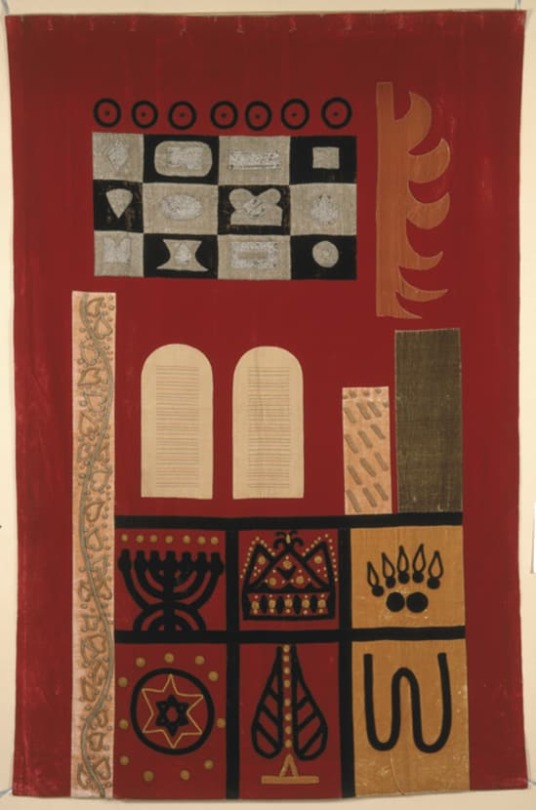
Torah Ark curtain, Adolph Gottlieb (American, 1903-1974). 1950-51. Velvet: appliqué and embroidered with metallic thread.
A surprising number of commissions for synagogue decoration went to major painters and sculptors in the years following World War II, thus eestablishing the long tradition of using master artists in such projects. Adolph Gottlieb's Torah curtain is an American expression of this revival. He designed the curtain, which was executed by the women of the congregation under the supervision of his wife, Esther.
The forms contained within Gottlieb's compartments, and the meanings of these forms, are related to unconscious expressions associated with African, Oceanic, and Native American art as well as with Carl Jung's writings about symbols and the "collective unconscious." Gottlieb's pictograph style was therefore easily adaptable to the creation of a ritual object using symbols of Jewish collective consciousness. In this curtain, he abstracts such basic elements of religious belief as the Tablets of the Law, the twelve tribes, the Temple, and the Ark of the Covenant. He also includes stylisations of objects developed for synagogue use (Torah mantles and Torah shields) and emblems that have become synonymous with Judaism (the Lion of Judah and the Star of David).
43 notes
·
View notes
Photo

Morgan and Marvin Smith (American, 1910-1993) (American, 1910-2003)
Marvin Painting a Self-Portrait
c. 1940
Gelatin silver print
Schomburg Center for Research in Black Culture, New York Public Library Photograph
© Morgan and Marvin Smith / via: Art Blart
Morgan and Marvin Smith were identical African-American twin brothers. They were photographers and artists known for documenting the life of Harlem in the 1930s to 1950s. …
The Smiths decided to commit themselves to the media of photography in 1937 and took free art classes taught by sculptor Augusta Savage. There they met numerous other influential artists including Jacob Lawrence and Romare Bearden. Morgan became the first staff photographer for New York Amsterdam News in 1937, the most popular Black newspaper at the time. Two years later they opened their own photography studio, M & M Smith Studios, next to the famed Apollo Theater on 125th Street. The twins were the theatre’s official photographers and through this job met influential models, artists and performers. Their studio became a hub of activity for entertainers and writers, as well as the location of the majority of their portrait photography. They photographed George Washington Carver and Billie Holiday, among other famous Black artists and politicians, as well as street life in Harlem during this time.
75 notes
·
View notes
Text
WIP Introductions Part One
Hospitality is Hell
I thought I would introduce some of my dearly beloved original characters so I could talk at length about them in the future.
Warning: The post below the cut has mentions of death, tobacco, suicide, and war. There isn’t anything particularly graphic, but please be safe.
Status: outlined, on a break
Medium: script
In an industrial, capitalistic interpretation of Hell, work is scarce and agonizing in poverty is commonplace. Victor Chen, recently laid off from his unforgiving factory job, finds work at the mysterious Grand Motel, run by its shrewd owner, Hilbert, and he must endure the suffering of working in hospitality.
Characters:
Victor Chen, bear (he/him), gay, disabled (post polio syndrome and autism), Chinese American, Catholic (1919-1950)
Kerosene by Bad Religion
Once a drug racketeer and restaurant waiter, Victor was murdered trying to escape his life of crime. He works as the bartender of the Grand Motel, though he would rather not work at all.
Fact: Victor was orphaned at a young age, and spent most of his childhood in his uncle’s restaurant.
Barbara Hilbert, agender (they/them), aroace, disabled (OCD), Black American, Baptist (1903-1942)
Paint Me Black Angels by Eartha Kitt
Once a bootlegger, Hilbert lost their life to a fatal case of influenza. They work as the owner of the Grand Motel, taking great pride in completing a dream they could not in life.
Fact: Hilbert loves fashion and often goes on long shopping trips to buy anything with sequins, shoulder pads, or loud prints.
Donovan Sandoval, bigender (he/him, she/her), gay, disabled (ADHD), Salvadoran American, Catholic, (1955-1990)
Me and Julio Down By the Schoolyard by Paul Simon
Once a telemarketer and scam artist, Donovan killed himself after being forcibly outed as a gay man. She works as the accountant and bellhop of the Grand Motel, struggling to handle multiple positions.
Fact: Donovan has had a terrible nicotine addiction ever since she was a teen, and would often tell her mother she would quit when she was dead. That has yet to happen.
Sachiko Fujimoto, butch (she/her, he/him), bisexual, disabled (NPD and congenital amputation), Japanese, Protestant (1952-1977)
Ue Wo Muite Arukou by Kyu Sakamoto
Once the leader of a girl gang, Sachiko died during a freak diving accident. She works as the receptionist of the Grand Motel, much to her irritation.
Fact: Sachiko has adult braces from years of ignoring her dentist as a teenager. She hates them.
Sandeep D’Costa, cisgender (he/him), aromantic gay, disabled (enucleation and PTSD), Indian, Catholic (1917-1946)
Vera by Pink Floyd
Once a soldier on the African front of the Second World War, Sandeep lost his life during complications in surgery. He works as the resident musician of the Grand Motel and takes great pride in his piano skills.
Fact: Sandeep received his musical training in the church choir, but he dreamed of being on the radio.
Settings:
Paradise
Welcome to Paradise by Green Day
The premiere vacation city of any well-to-do individual looking for a reprieve from Hell.
Vibes: neon lights, vices, pink stucco, novelty dining, astroturf, distant smokestacks, and the smell of rot
The Grand Motel
Hotel California by The Eagles
A budget location on the outskirts of Paradise owned and operated by Barbara Hilbert.
Vibes: tile pools, peeling wallpaper, the smell of cigarettes, wrought iron balconies, art deco roofs, and carpeted bathrooms
Thanks for reading (。・ω・。)ノ♡
11 notes
·
View notes
Text

Helen Frankenthaler, New York, Gordon Parks, 1957
#photography#vintage photography#vintage#helen frankenthaler#gordon parks#1950s#1957#color photography#american#african american#black artists#artists of color#portrait#celebrity
251 notes
·
View notes
Text

Black History Month is a time to celebrate the contributions of Black people in the nation’s history. The founder of Black History Month was Carter G. Woodson (1875–1950), known as the father of Black history and the second Black person to receive Ph.D. from Harvard University. While growing up on his family’s farm in Virginia, Woodson’s enslaved uncles taught him in a one-room schoolhouse. Before high school, he worked in coal mines alongside formerly enslaved men and Civil War veterans who were illiterate. Woodson came to understand the importance of education and the knowledge gained from Black people’s lived experiences, which should be both preserved and celebrated.
As a scholar and educator, Woodson wrote many influential books including “The Mis-Education of the Negro” published in 1933 and “African Heroes and Heroines” published in 1944. His critique of the American school system for the various forms of violence inflicted upon Black people and inequality to access is still very relevant. He also wrote on the rich history of Africa and African American life to educate teachers and the public about the myriad contributions of Black people.
Before Woodson created Negro History Week in 1926, many Black teachers were already celebrating the birthdays of various figures such as Frederick Douglass, who was born in February. Woodson offered an institutional structure with materials that could be disseminated across Black schools. The week was eventually expanded to a month-long celebration starting in 1976.
You can read more about Carter G. Woodson in the Harvard Gazette, in a recent interview with Jarvis Givens, assistant professor at the Harvard Graduate School of Education and the Suzanne Young Murray Assistant Professor at the Radcliffe Institute for Advanced Study.
The image is the cover of “African Heroes and Heroines”, a part of FAL’s Digital Images and Slides Collection (DISC), a collection of images digitized from secondary sources for use in teaching and learning. FAL does not own the original artworks represented in this collection, but you can find more information at HOLLIS Images.
Cover for Carter Woodson's African Heroes and Heroines
Author / Creator
Jones, Lois Mailou, American and African American artist, 1905-1998 [artist]
Production: Washington D.C.: Associated Publishers, 1939
Woodson, Carter Godwin, American historian, 1875-1950
Repository: Stuart A. Rose Manuscript, Archives, and Rare Book Library, Atlanta, Fulton, Georgia, United States
HOLLIS number: 8001690410
#CarterGWoodson#CarterWoodson#HarvardGazette#Blackhistory#Blackeducator#Blackhistorian#Blackhistorymonth#bookcover#HarvardFineArtsLibrary#Fineartslibrary#Harvard#HarvardLibrary#digitalimagecollection#digitalimage#africanheroesandheroines#harvardfineartslibrary#fineartslibrary#harvard#harvard library#harvardfineartslib#harvardlibrary
45 notes
·
View notes
Text
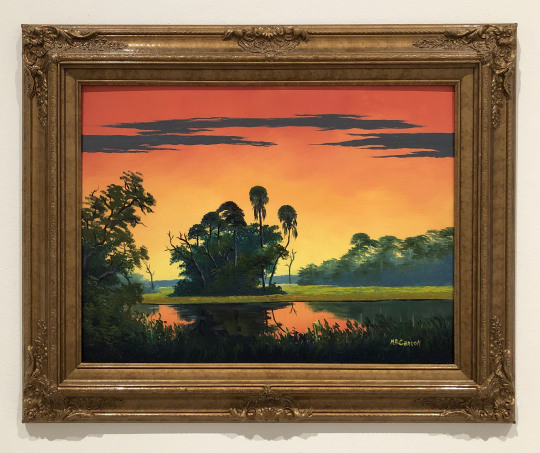
Mary Ann Carroll (1940-2019), “Untitled (Backcountry Twilight)”, n.d., Oil on Masonite board
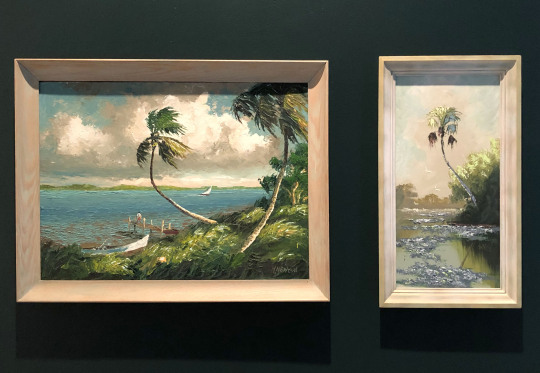
Harold Newton (1934-1991), “Untitled (Painting of the Indian River)”, c. 1958, Oil on Upson board; Alfred Hair (1941-1970), “Untitled (Marshland with palm), c. 1958, Oil on Upson board
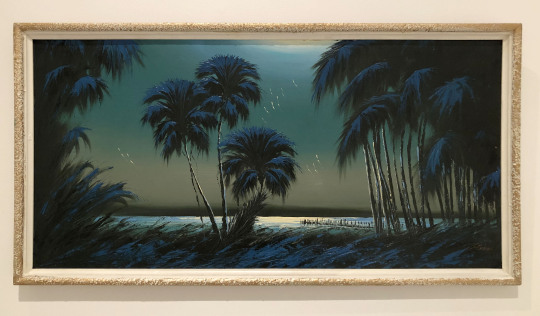
James Gibson (1938-2017) “Untitled (Moonlit palms)”, n.d., Oil on Upson board
In early 2021, Tampa Museum of Art presented the work of Florida’s famous Highwaymen painters in the exhibition Living Color: The Art of the Highwaymen.
From the museum-
The Highwaymen are a group of African American artists celebrated for their distinctive paintings of Florida’s natural environment. Working in and around the Fort Pierce area beginning in the 1950s, these self-taught artists depicted the state’s scenic coastline and wild backcountry, often in dazzling combinations of color and tone. Brilliant tropical sunsets, windblown palms, towering sunlit clouds, and blooming poinciana trees are among the many subjects that have become iconic images of Florida in part because of the paintings that the Highwaymen created. In the state’s postwar boom years their paintings found an enthusiastic audience among a growing population of new residents and visitors. Unrecognized by the region’s art establishment of galleries and museums, the Highwaymen by necessity catered directly to their patrons, selling their paintings door-to-door along such thoroughfares as Route 1. It was from this practice that the name “Highwaymen” was later coined.
The popularity of Highwaymen paintings waned in the 1980s as the vision of Florida was reimagined by an ever-increasing population and once-pristine landscapes were lost to development. Then in the mid-1990s a new generation of collectors, with fresh eyes, rediscovered the paintings and began to assemble significant collections. These collectors saw the art of the Highwaymen as an important artistic legacy and together with several writers, scholars, and enthusiasts began the process of establishing the historical context and reevaluation of their work. Books and articles followed, bringing a new level of recognition for the achievements of these artists and, with that, growing popular acclaim. The contribution of the Highwaymen to the cultural life of Florida was formally recognized in 2004 when the group of 26 artists was inducted into the Florida Artists Hall of Fame.
Living Color: The Art of the Highwaymen brings together 60 paintings by a core group of the Highwaymen including Al Black, Mary Ann Carroll, Willie Daniels, Johnny Daniels, James Gibson, Alfred Hair, Roy McLendon, Harold Newton, Sam Newton, Willie Reagan, and Livingston Roberts.
Focusing on work produced from the 1950s to the 1980s, the exhibition is an in-depth examination of the group’s initial period of success when their groundbreaking style of fast painting was being developed. Fast painting is a hallmark and essential innovation of the Highwaymen. Facing limitations imposed by the racial prejudice of their time, they had little or no access to formal training or to conventional art markets. To overcome these obstacles, they produced large numbers of works which could be sold at very affordable prices. Some estimates of the group’s overall production during their heyday exceed 200,000 paintings, with certain artists creating dozens of paintings per day. Their creative response to the racism they confronted resulted in an original artistic practice.
Opening at The Woodson African American Museum of Florida in St. Pete this Saturday, 9/9/23, is Florida Highwaymen: The Next Generation – The Legacy Continues, an exhibition of work by Ray McLendon, son of Highwayman Roy McLendon, who creates Florida landscapes in the same iconic style his father used.
#Tampa Museum of Art#Alfred Hair#Art#Art Show#Carter G. Woodson Museum#FBF#Florida Art#Florida Art Shows#Florida Artists#Florida History#Harold Newton#Highwaymen#Painting#Ray McLendon#Roy McLendon#St. Pete Art Shows#Tampa Art Shows#The Woodson African American Museum of Florida#Woodson Museum#Florida Highwaymen
10 notes
·
View notes
Text

Sam Middleton was born in 1927 in New York City and grew up in Harlem at the height of the Harlem Renaissance. In 1944, he enlisted in the Merchant Marines at age 17 and returned to New York in the 1950s. There he befriended other New York School artists such as Franz Kline, Jackson Pollack, and Robert Motherwell.
Middleton, who was largely self-taught, often saw jazz masters like Thelonious Monk and Charlie Parker play live in the 1950s, and was inspired to translate the spontaneity of their music to works on paper. He incorporated music sheets, newspapers, tickets, magazines, and cards he’d collected into his collages, famously attaching them with Elmer’s glue.
In 1955, Middleton made his first artistic trip outside of New York. Following the lead of other African American artists who were in search of a more open-minded atmosphere, Middleton settled briefly in Mexico City. It was in Mexico that his style shifted from social realism to abstract expressionism. By 1959, he resolved to leave the US permanently. He spent time traveling to Spain, Sweden, and Denmark, and eventually settled in the Netherlands in the 1960s. He formed many close friendships during his time in Europe, spending time with artists and intellectuals such as Herbert Gentry and James Baldwin. Middleton passed away in the Netherlands in 2015.
Middleton’s work has been exhibited nationally and internationally and can be found in the collections of the Whitney Museum, the Brooklyn Museum, the Columbus Gallery of Fine Arts, Fisk University Galleries, the Hampton University Museum, and the Howard University Museum, as well as in private collections all around the world.
Featured Work:
PFF137 - "Love Day," Mixed media on paper, 1963, 39 x 34 in.
#abstract art#african american art#black art#black art in america#sam middleton#black artists#abstract expressionist art#mixed media art#harlem renaissance#PFF Collection
40 notes
·
View notes
Text

GAY ICONS MATT BAKER
Matt Baker is the best known African-American artist from the Golden Age of comics (1940s and early 1950s). He drew in the “good girl” art style, his curvaceous Phantom Lady is a great example. He worked with several comic publishers of the era, including Fox, Quality, and Charleton.
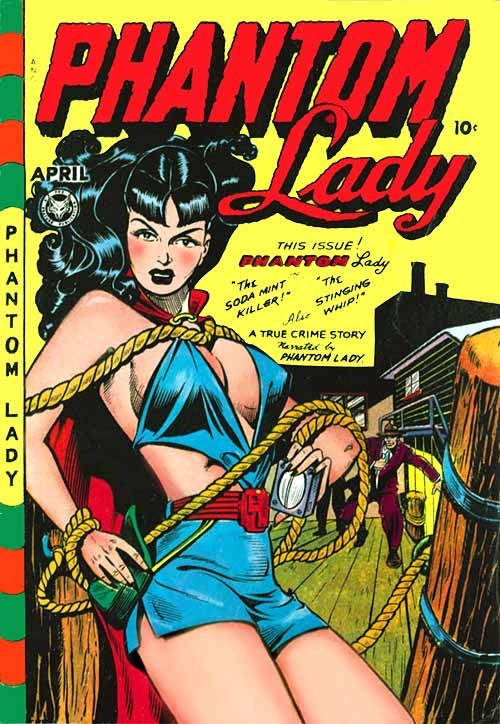


Baker also created the first black character that appeared regularly in Crown comics - Voodah, a Tarzan-like jungle hero. But during that era, many comic book wholesalers and retails refused to sell comics featuring Black characters on the cover. So to avoid the problem, Voodah was depicted as Caucasian of the covers but African on the inside pages.

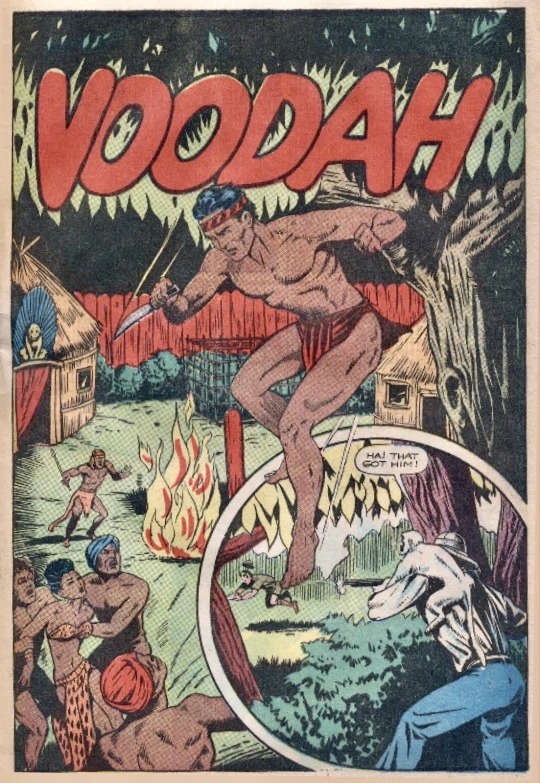
Baker never married and his brother considered him a “Lady’s Man”. But Frank Giusto, one of his close friends, and artist Lee J. Ames (a fellow artist) have said in interviews that Baker was gay.
Baker was inducted into the Will Eisner Comic Book Hall of Fame in 2009.
#gay icons#African hero#phantom lady#Matt baker#African American#gay artist#golden age of comics#good girl art
35 notes
·
View notes
Text
Gwendolyn Knight
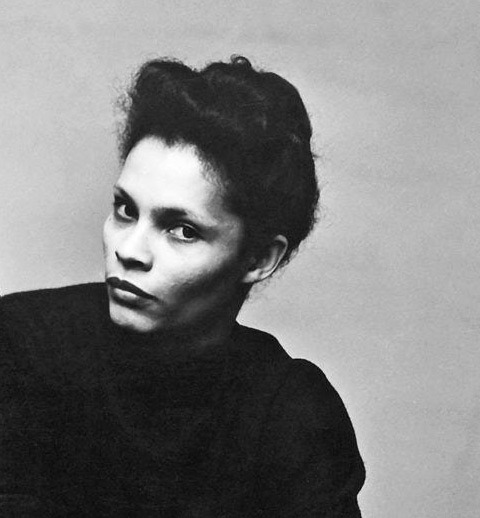
At just 7 years old her mother gave her over to trusted close friends with whom she immigrated from Barbados to the US with. Eventually settling in Harlem, NY where she graduated from Wadleigh High School in 1930. Now known as Wadleigh Secondary School For the Performing and Visual Arts, the only accredited arts high school in Harlem.
She went on to attend Howard University studying fine arts with Lois Mailou Jones and printmaker James Lesesne Wells from 1931-1933. The thick of The Great Depression caused financial hardship for Knight who had to drop out before receiving her degree. She then returned to NY and began work at the Works Projects Administration as an assistant to the muralist, Charles Alston. She didn’t let her early departure from college stop her. She continued studying art at the Harlem Community Arts center where she was mentored by Augusta Savage. Through Savage, she met and was exposed to the work of other artists, poets, and writers of the Harlem Renaissance.

In 1934 she joined another Works Projects Administration mural project, where she met fellow painter and future husband Jacob Lawrence. In 1946 Knight and her husband were invited to teach at Black Mountain College, a private Liberal Arts College in Black Mountain, North Carolina. Returning to work and live in NY during the 1950s.
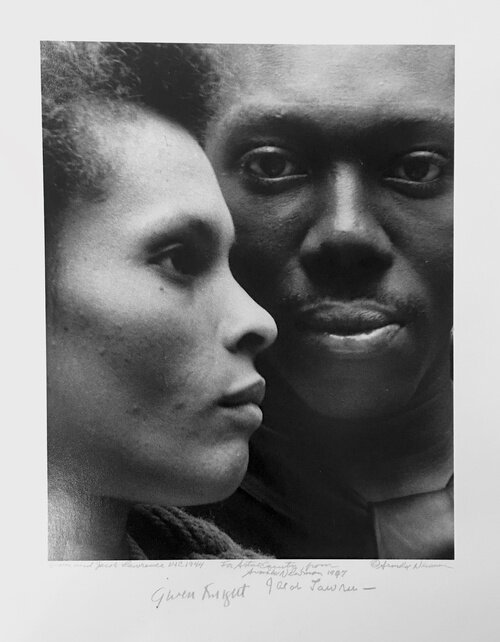
She then moved with her husband to Seattle Washington after he accepted a job at the University of Washington’s School of Art. The traveling and work she has done from the 40s-60s some would say makes her an itinerant artist. She is quoted in a Callaloo magazine interview with Charles H. Rowell saying “It wasn’t necessary for me to have acclaim… I just knew that I wanted to do it, so I did it whenever I could.”

Knight procured support from the National Links, INC for her first one woman show that was developed in 1976. This exhibit created a greater desire for her works and acquiring of her pieces by national museums.

Knight’s work was concentrated on storytelling paintings that illustrated the lives, culture, and history of African Americans that surrounded her own daily life. Her paintings encompassed a diverse range of subjects such as still life, portraits, and urban scenes. She worked with a variety of different mediums from oil paints, water colors, and gouache. Later in her artistic journey her paintings started to have a more poetic depiction of animals through etching and monoprints. You can also see that she draws from her admiration for African dance, sculpture, and theatre.

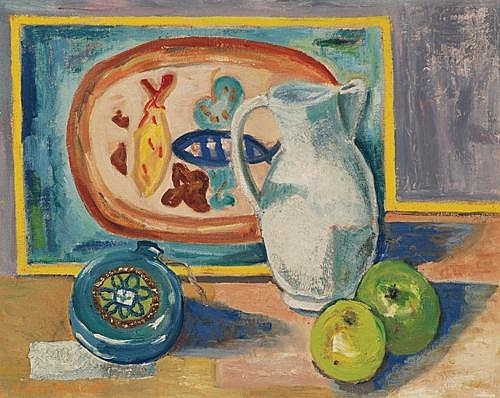
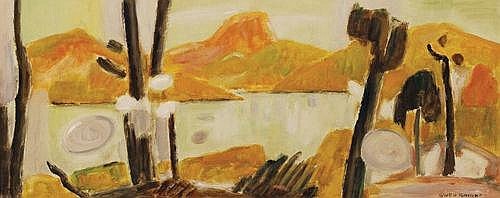
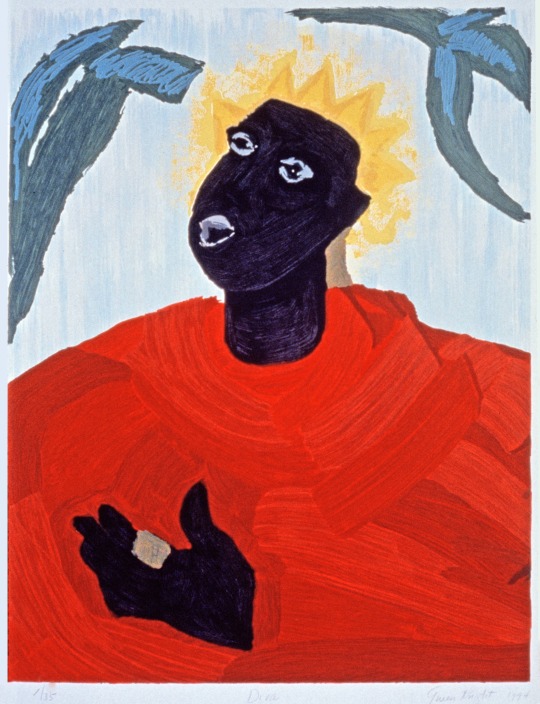
https://jacobandgwenlawrence.org/
#artist#artists on tumblr#curator#curatorial#history#gallerist#gwendolyn knight#jacob lawrence#harlem#nyc#manhattan#harlem renaissance
8 notes
·
View notes